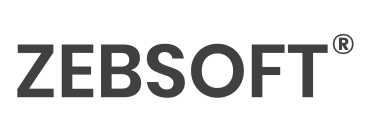Explore the Zebsoft Platform
Full System Demo — See Exactly How It Works
This in-depth demo video gives you a complete walkthrough of Zebsoft in action. With over 20 minutes of live screen recordings, you can jump to the sections most relevant to your needs using the index below.
Designed for compliance managers, auditors, risk owners, and business leaders who want to see real functionality — not sales talk.
Full Demo Video
Watch Now
(Runtime: approx. 22 minutes)
▶️ Use the chapter guide below to skip to what matters most.
Demo Video Chapter Index
Intro
- 00:00 — Welcome & Navigation Overview
- Core Features by Function:
- The Process Approach > 00:33
- Control of User Visibility > 01:05
- Risk Management > 02:16
- Information Security > 04:50
- Processes & Suppliers > 05:15
- People & Roles > 06:06
- Asset Inspection & Maintenance > 07:03
- Document Control > 08:45
- External Documents > 12:38
- Objectives & KPIs > 13:28
- Planning of Change > 14:12
- Audit Planning > 14:50
- Checklists & Forms (Type 1) > 15:45
- Checklists & Forms (Type 2) > 16:45
- Audit & CAPA Results > 17:33
- Raising a Non-Conformance > 18:10
- Meetings & Management Review > 18:35
- Monitoring of Results > 19:20
- User Dashboards > 19:50
- Setting Tasks > 20:20
- Business Intelligence Reporting > 21:19
Trusted by Leading Manufactures
“Many 1,000’s of global users rely on ZEBSOFT to maintain and control the effects of change on strategy.”
Book A Demo Here!
Choose a convenient date & time below to speak us.
- Book a demo choose your date.
Explore the Zebsoft Platform
Full System Demo — See Exactly How It Works
This in-depth demo video gives you a complete walkthrough of Zebsoft in action. With over 20 minutes of live screen recordings, you can jump to the sections most relevant to your needs using the index below.
Designed for compliance managers, auditors, risk owners, and business leaders who want to see real functionality — not sales talk.
Ready to Take Control?
See how ZEBSOFT streamlines your change management in just 30 minutes.
Book a Live Demo
Download Brochure




